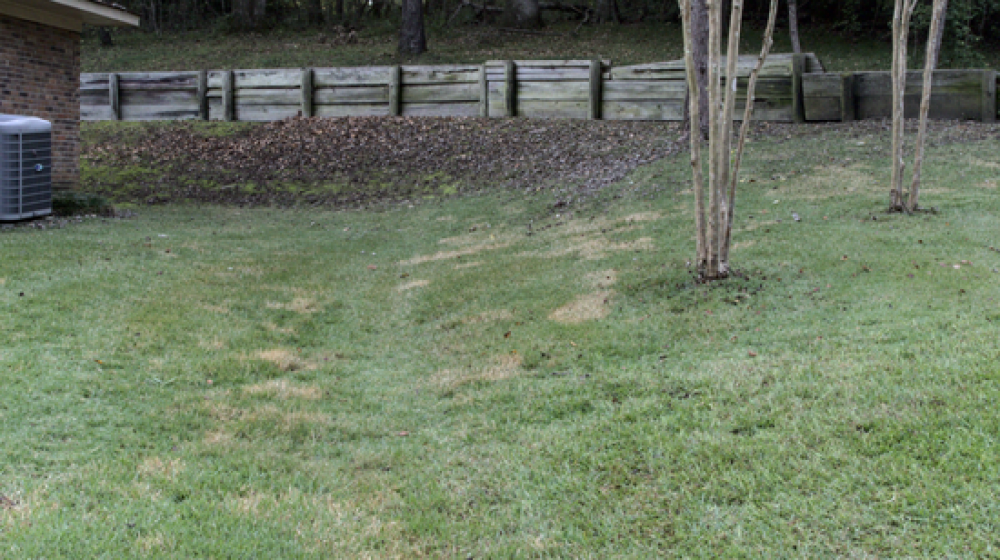Tips to Recognize Lawn Problems

Large (brown) patch is a common tufrgrass disease. (Photo by MSU Extension)
A lot of time and energy is put into caring for your lawn: mowing, fertilizing, watering, and everything in between. It truly is a chore to maintain a healthy lawn. Despite all the efforts, it may seem impossible at times to have the pristine yard that you see in the magazines. Weather, pests, cultural practices, and a variety of other factors can cause problems, making it difficult to have a picture-perfect lawn.
When weeds, disease, or pest issues arise, do you know how to assess the situation? If you have a problem spot in your grass, here are six tips to help you solve the mystery:
- Do you know what kind of grass you have? If not, find out! That is a good starting point to help you identify the problem.
- Learn how to look for symptoms and signs of problems. Familiarize yourself with what common grass diseases, like fairy rings, dollar spots, large patch, and gray leaf spot, look like so you can self-diagnose. Extension Publication 1322, “Establish and Manage Your Home Lawn,” offers great descriptions!
- Keep a record of when and where problem areas occur. Some problems, such as crabgrass invasion, white grub damage, and turf diseases, may be an annual occurrence. It’s a smart move to keep a garden journal of what’s been happening in your landscape to reference back to. Let’s be real, we could all use a little memory refresher every now and then!!
- You likely won’t be able to identify pests and their damage with the naked eye, so invest in good diagnostic tools to help you out! Consider purchasing a magnifying glass and pH meter to aid you in assessing the problem.
- Sometimes you’ll have to call for outside help to figure out what’s wrong. Extension is a great resource. So, be sure to reach out to your local Extension office if you need help confirming the identity of the pest or disease. It may be necessary to send a sample to a diagnostic lab for analysis. That’s something we can help with!
- Once you’ve determined the problem, do your research on which fertilizer and/or pesticide is needed to remedy the situation. You can find control methods in our Extension Publication on how to maintain your lawn.
Remember to regularly mow and fertilize your lawn to encourage a healthy turf. As the summer temps continue to rise, be prepared to water the lawn as needed.
Subscribe to Extension for Real Life
Fill in the information below to receive a weekly update of our blog posts.









